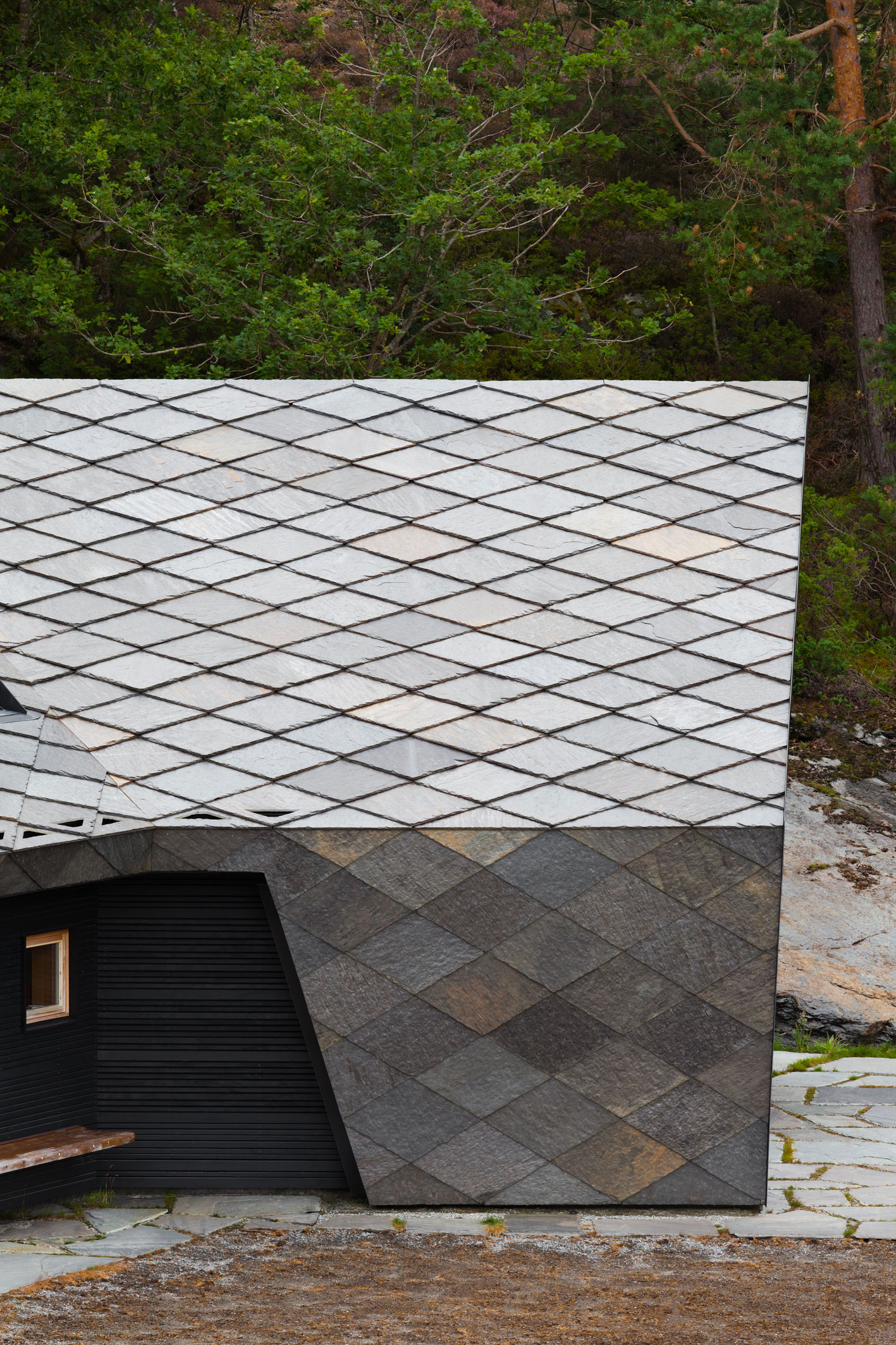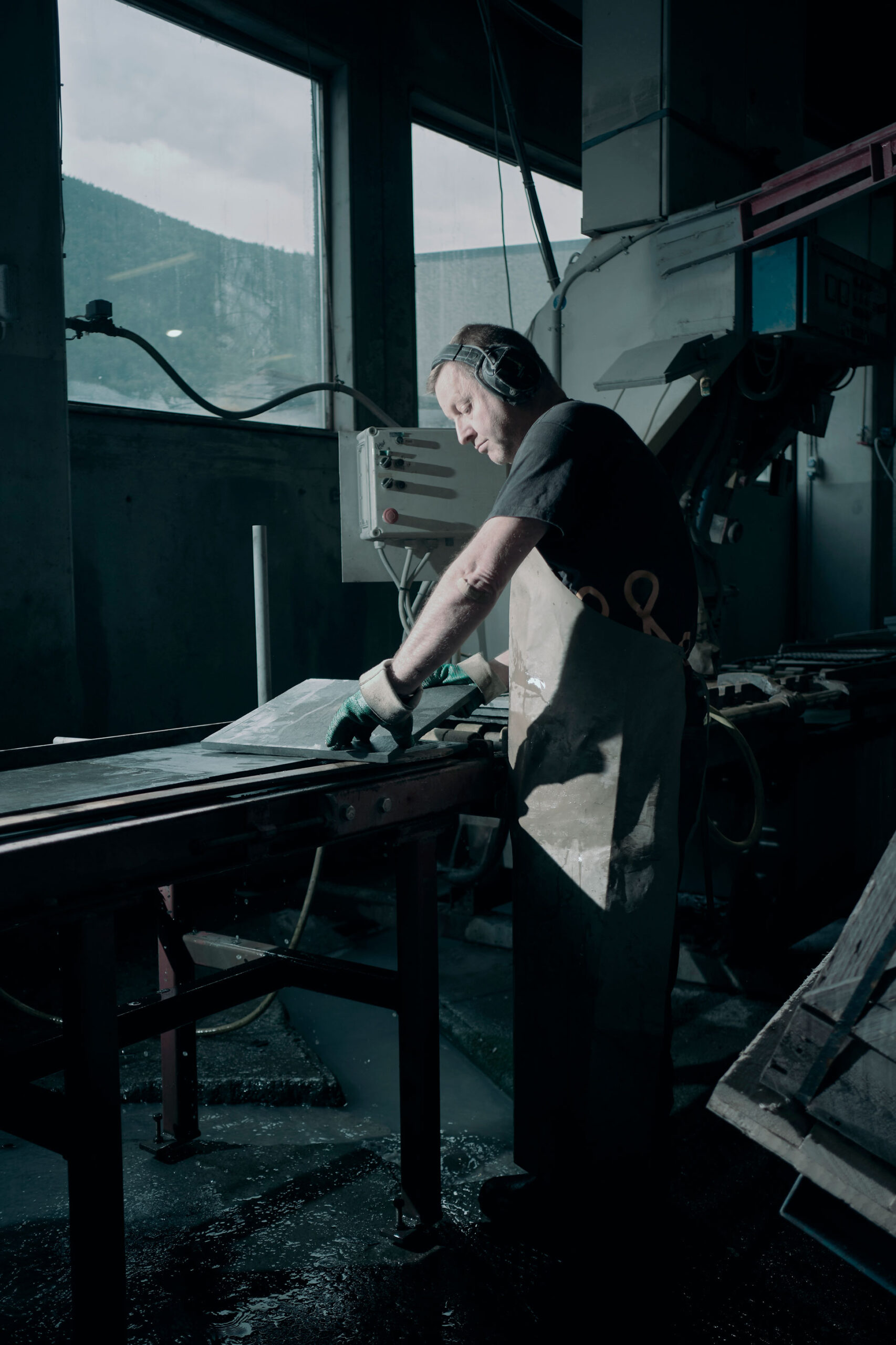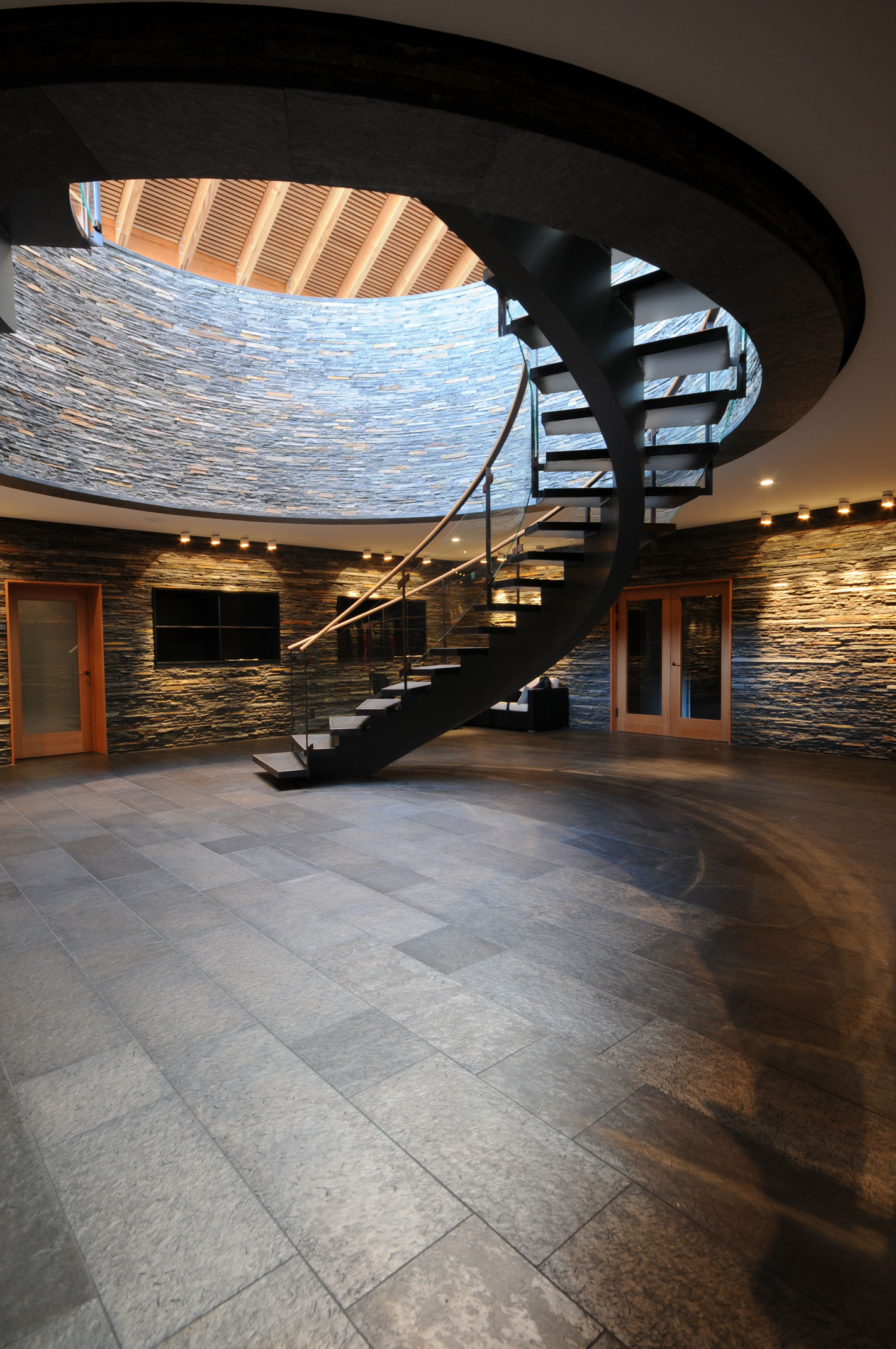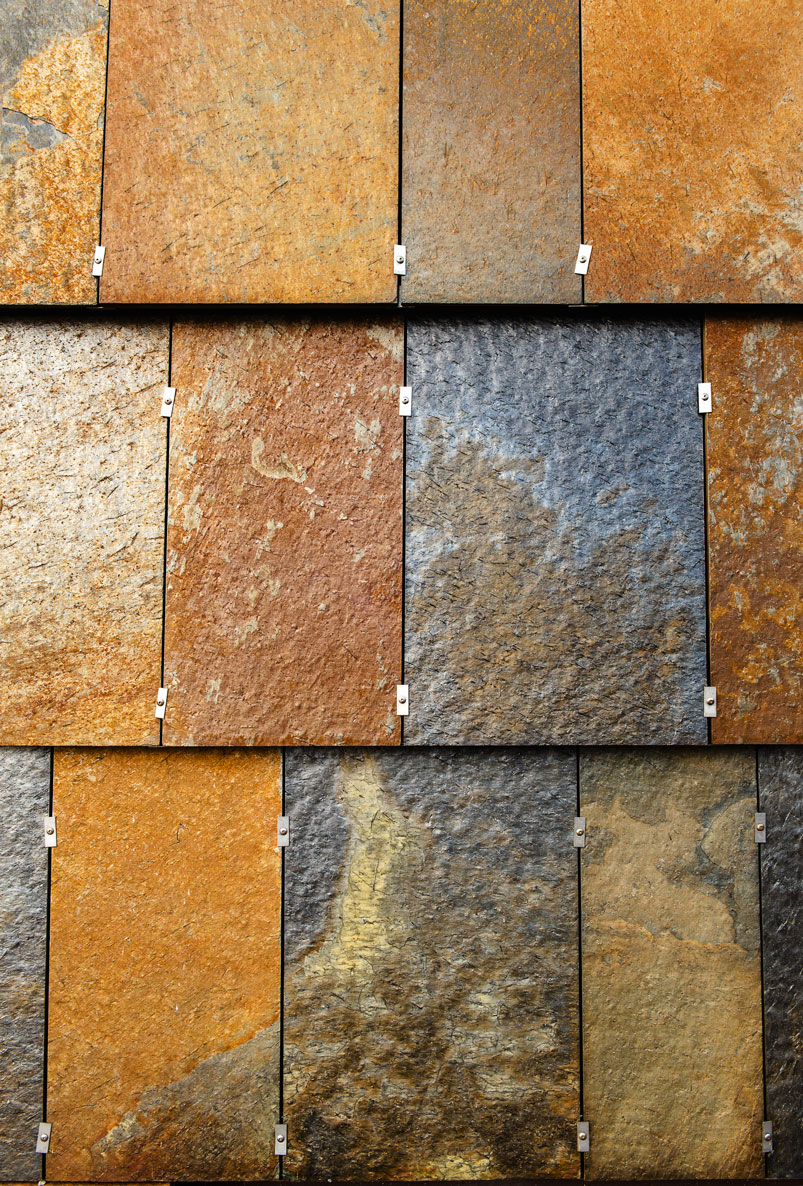About Otta Skifer
Otta Skifer was started in 1875 under the name “Sel skiferbrud” and the company celebrates 150 years in 2025! The Otta slate is mined in the Pillarguri quarry. The slate is characterized by mica, rosettes of black amphibole crystals and small crystals of garnet, which give the stone a three-dimensional feel. The particular slab slate found in the Pillarguri quarry has the geological name Sel mica slate, which also describes the surface in the Otta slate.
Name confusion can quickly arise around Otta Skifer and Ottaskifer, but Otta Skifer is the name of our company, and Ottaskifer is our signature product. Ottaskifer is available in dark and rust. Read more about the Ottaskifer here.
The stone industry has been an important industry for Otta and the surrounding areas. Over the past centuries, a number of people have made their living from the stone industry. Today, Otta Skifer alone employs 25 people, and in addition there are several dozen employees in the related stone industry in the area.
The Pillarguri Quarry
Otta Skifer operates the “Pillarguri” slate quarry, which is a fifteen-minute drive up the mountain above the factory. Pillarguri is a large area that contains extraction areas and it is here all the slate we use in our products is extracted. As we have a factory in the immediate vicinity of the slate quarry, we can say with our hands on our hearts that our products are short-hauled!
The Pillarguri quarry has been an active slate quarry ever since 1830. Back then the walls of Dovre church were covered with large, square slate slabs of Ottaskifer brought from Pillarguri. The slate plates adorn the walls to this day, giving the church a unique and original appearance.
Long traditions
Extraction of slate was hard and heavy work in the 19th century. Then all slate was taken out manually. When the mountain was cleaned of weathered rock and the good slate emerged, ironpeckers were used to wedge loose blocks of slate. When the blocks came loose, they were divided into varying thicknesses by driving long wooden or iron wedges into several places in the block. The thickness of the slate was adjusted for further use.
In the 19th century, slate was mostly only used for roofing. Which was also done by hand. A man could cut between 60 and 80 “lapheller” or roof tiles per day. In 1884, the slate scissors were invented, which ment workers now could cut 400 roof tiles per day. All roofing slate was cut to completion at the quarry before it was transported down.
In the beginning, all lifting and moving of slate was done by hand. Blocks and slabs were dragged out of the slate quarry using ropes. It was then transported down the steep road from the mountain by horse and sledge. It could be a hard strain for both the horse and the sled when 700 kg of slate had to be backed down the steep slopes. In the worst descents, the sleds had to be braked with roughly forged iron chains that were wrapped around the skids. In 1950, the car was put into use for transportation of slate, and suddenly three tonnes of slate could be transported in one load. It was a big step forward.
In 1949, the first factory building in Otta was built. Both the first grinding machine and the first stone saw were bought. Word spread that there was a “machine that could cut stone in Otta” and intrigued people turned up to see the first stone saw in the area. This was the start of the modern mining of Ottaskifer from Pillarguri.


Modern extraction of slate
Today, large blocks of slate are mined in the Pillarguri quarry. This takes place by pallet shooting with black powder as ammunition. Previously, the slate was also sawn out with a wire saw. This is a method that is very relevant to start up again. The method is far more gentle and makes better use of the resource.
With excavators and wheel loaders, we remove and load the raw material onto cars. We transport large blocks of up to eight tonnes to the factory where they are further processed into a number of different products and surface treatments. The splitting of the slate blocks still takes place according to old principles with a lot of handwork, but today the wedges are also inserted with compressed air hammers.
When the blocks are split into different thicknesses, they are further refined in the factory. Based on quality sorting, the stone is sawn, cut, brushed and polished into many different shapes and forms.


Ottaskifer to Europe
When the railway came to Otta in 1896, the Ottaskiferen was sought after as a roofing stone in large parts of Norway. This also led to the development of the stone industry accelerating.
In the 1940s, other uses than just as a roofing slate were found, and with modern tools more possibilities arose. It was now possible to saw slate, which could then be used as floor and wall decoration. An international market with concentration around Germany and the Netherlands was built up and the Ottaskiferen begun export to the south of Europe.
In the 1980s, over 300,000 square meters of slate were mined, most of which was exported to the Netherlands and Germany.
Ottaskifer on pioneer buildings
For the 1994 Lillehammer Olympics, a large radio and television center was built at Storhove north of Lillehammer. This building was clad externally with large slate slabs of Ottaskifer. The building is eye-catching where it is located close to the highway, and the slate becomes prettier every year it ages.
In 1996, work began laying down 10,000 square meters of ground slate floor tiles for the new main airport at Gardermoen. The airport opened in 1998 and has over 20 million travelers each year. It goes without saying that the floors must be wear-resistant and last over time, and nothing beats Ottaskiferen at this.
Otta slate is considered an exclusive material with its long durability and unique aesthetics. As a natural material, it is very flexible and applicable and is used, among other things, on facades in stairs and as decorations both domestically and abroad. Today you can therefore see Ottaskifer on and in a number of buildings around Europe and Asia.


